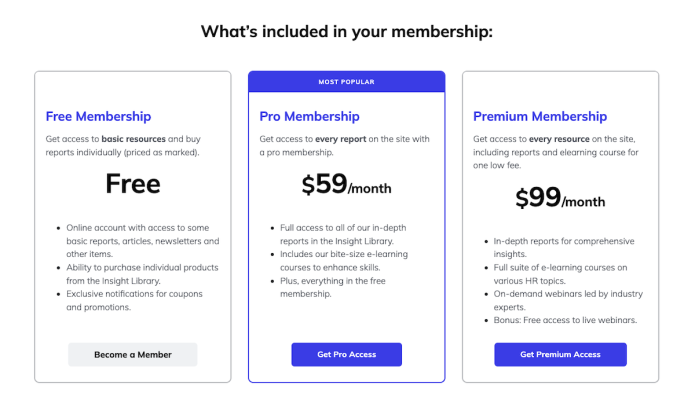
If you're just getting started and don’t have an audience yet, don’t worry—you’re not alone. Growing a membership site is a lot like growing any other business: it takes consistency, patience, and a willingness to test different strategies until you find what clicks.
The good news? There are tons of ways—both online and off—to get more eyes on your site. We’ve rounded up 10 smart tactics you can start using right away.
1. Build an Email List
Believe it or not, email marketing is still the most effective strategy out there. When people visit your site, you want a way to stay in touch—and email is still the best tool for turning curious visitors into paying members.
Offer a lead magnet -- a free product or download -- in exchange for their email. This could be a downloadable guide, a checklist, a mini course, or a free trial. This is also another tried and true method of obtaining qualified leads!
Once people sign up, don’t ghost them. Stay in touch regularly—ideally once or twice a month—and make sure your emails are helpful, not just salesy.
2. Start a Blog (or Something Like It)
Sharing helpful, engaging content builds trust and shows people you know your stuff. Whether it’s a written blog, video series, podcast, or even just helpful Instagram posts, the format doesn’t matter—just pick one you’ll actually stick with.
Your content should educate, inspire, or entertain. Use it to drive email signups and gently introduce your membership as the next step.
3. Share Teaser Content
Think of this like movie trailers for your membership site. Give people a sample of what they’ll get if they join—like a short video clip, a preview lesson, or a few slides from a paid workshop.
You can share these snippets on your blog, in your emails, and across your social channels to spark curiosity and encourage signups.
4. Show Up on Social Media
Social media isn’t just about selling—it’s about showing the human side of your business. Let people in on what you're building, what inspires you, and what goes on behind the scenes.
Aim for a mix of content:
- 20% promotional (sharing blog posts, offers, or sign-up links)
- 80% community-focused (sharing your journey, engaging with your audience, posting polls or questions)
Focus on building relationships, not just pushing products.
5. Get Featured (a.k.a. Do Some PR)
Public relations doesn’t have to mean fancy press releases. These days, it’s more about getting featured on relevant blogs, podcasts, YouTube channels, or niche media sites.
Think about where your ideal member hangs out online. Reach out with a pitch that explains who you help and why their audience would benefit. If you need help with writing pitches, freelance platforms like Upwork or Fiverr can be great resources.
6. Speak Up
Public speaking—whether live or online—is a great way to connect with your audience and show your expertise in action.
Look for opportunities like:
- Local networking or business events
- Online summits and virtual conferences
- Podcasts or panel discussions
- Workshops or guest sessions in other people's communities
You don’t have to be a pro speaker—just be real, helpful, and passionate.
7. Show Up at Networking Events
There’s still power in face-to-face connections (or even Zoom calls). Local meetups, industry mixers, or niche events can open doors to new audiences, collaborations, and referral partners.
You can also take a more intentional route: seek out specific people or groups who align with your audience and start building relationships. This approach can be much more targeted and fruitful than handing out business cards to random folks.
8. Collaborate & Guest Post
Want to build credibility and boost your SEO at the same time? Collaborate with others in your niche.
Guest posting on someone else’s blog or doing a content swap with a brand that complements (but doesn’t compete with) yours can earn you valuable backlinks and new traffic.
Let’s say your membership is focused on wellness—partnering with a site that sells yoga gear or health food could be a perfect match.
9. Run Targeted Ads
Ads can fast-track your growth, but only if you approach them strategically.
Start by getting super clear on your target audience—who they are, what they need, and where they hang out online. Then create campaigns that speak directly to them.
Use strong landing pages that match your ad message, or you risk paying for clicks that don’t convert. Platforms like Google Ads, Facebook, Instagram, Pinterest, or TikTok can all be great—but only if your audience is actually there.
10. Partner with Influencers
Influencer marketing isn’t just for big brands. A collaboration with someone who has an engaged following in your niche can quickly boost your visibility.
Reach out to influencers whose audience aligns with yours and propose a partnership—this could be a one-time promo, a sponsored video, or an affiliate commission for signups.
The key here is alignment. Make sure their followers are the type of people who’d genuinely benefit from your membership.
Ready to build your membership website?
Try SubHub for free. No credit card required.
Start my free 14-day trial



